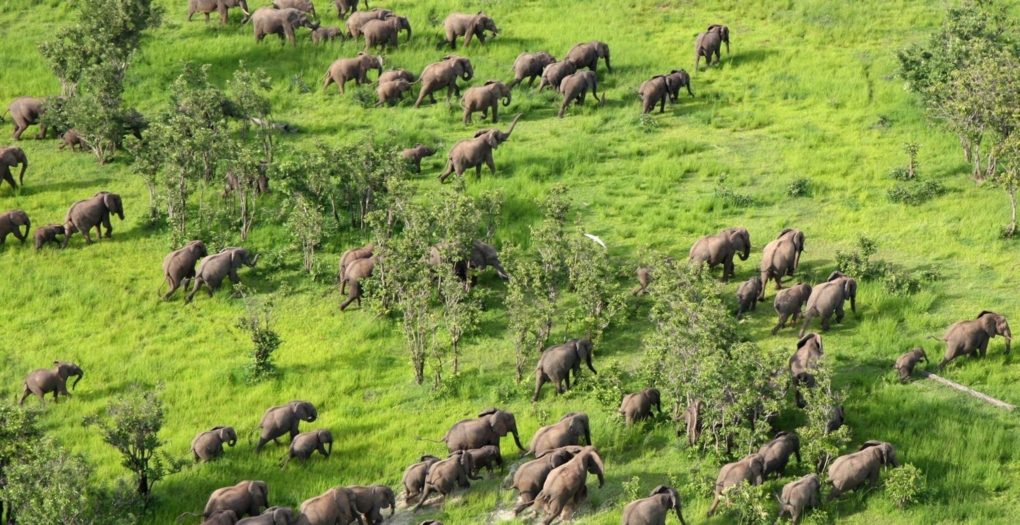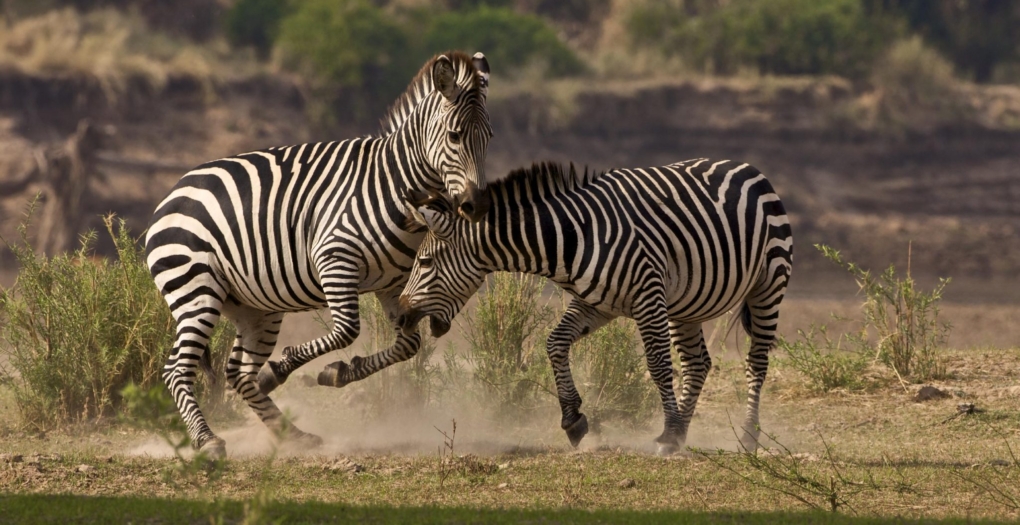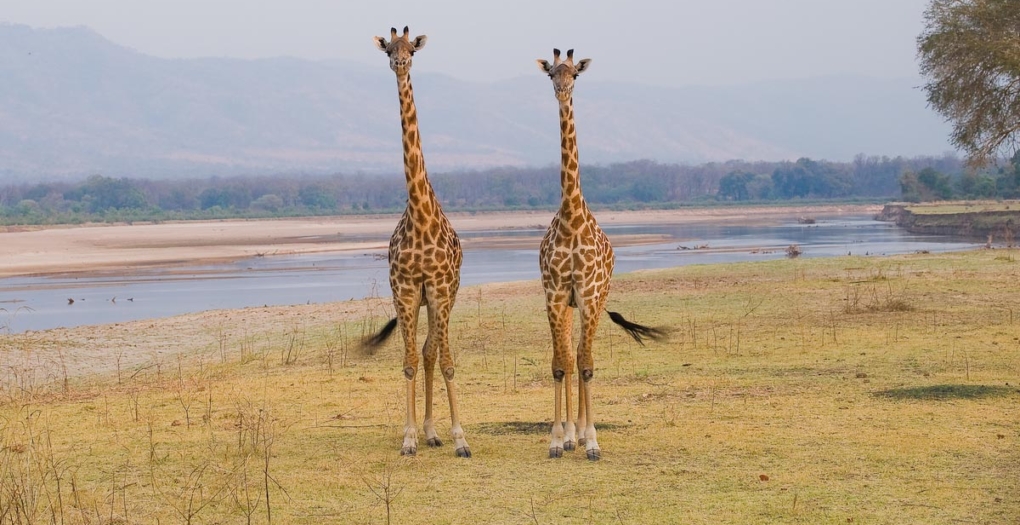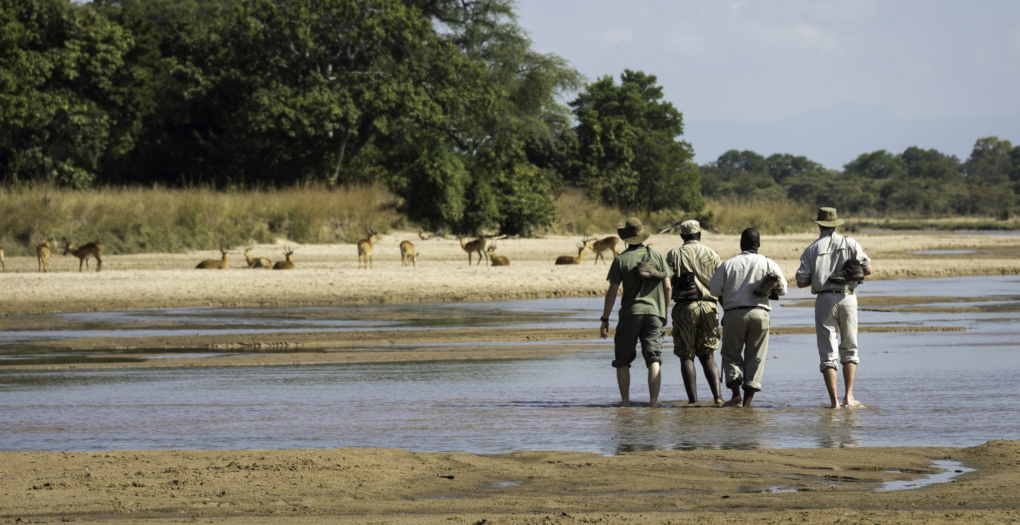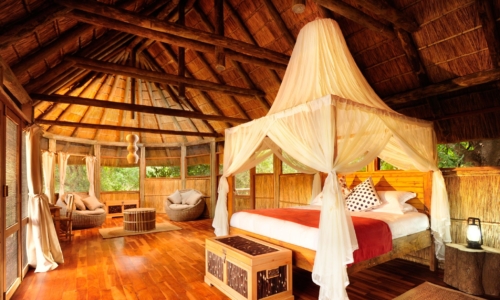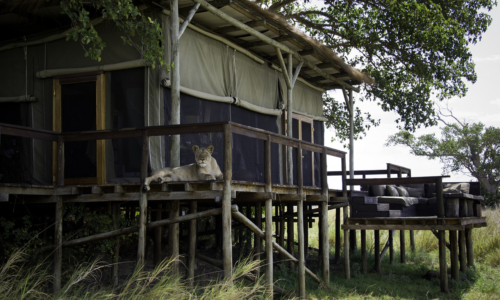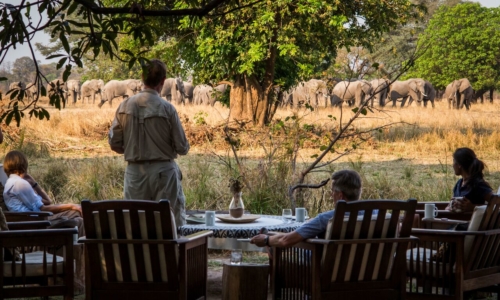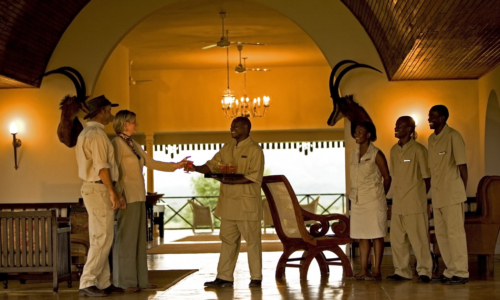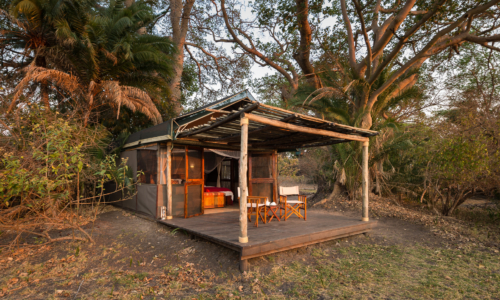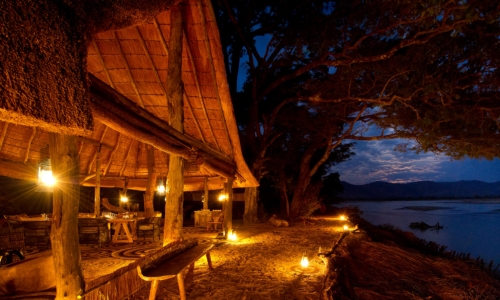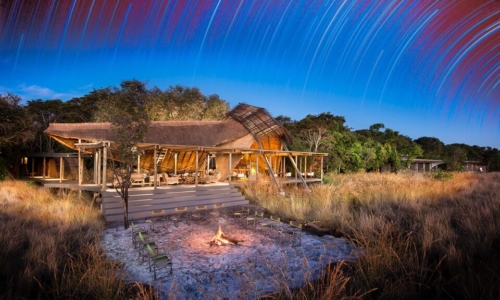A world-famous wildlife sanctuary, the South Luangwa National Park encompasses 5,629-square miles and its valley is home to impressive concentrations of wildlife. The heart of the park is the Luangwa River which is the most intact major river system in Africa.The historic fertility of the region is perhaps primarily attributable to its topography. The Muchinga Escarpment forms the park’s western and northwestern boundaries, sloping steeply down to the river from the west side. The river valley, continued to the west by the Lunsemfwa River valley, forms a natural barrier, and to this day there are no man-made roads spanning the valley. Woodland savanna is the dominant ecosystem of the park, with Zambezian and mopane woodlands covering the valley and southern miombo woodlands on the higher slopes. Large patches of grassland traverse the woodlands and serve as floodplains at the valley floor.
Largely protected from human agricultural or commercial development, the park remains a haven to wildlife including 60 different animal species. Visitors can expect to encounter many of the park’s over 400 species of fowl including marabou stork, great white egrets, black headed herons, open billed storks, hornbills, pelicans, cranes, and the stately goliath heron. But more popular are the great herds of giraffe, zebra, duiker, eland, impala, puku, kudu, roan, sable, and hartebeest that roam the valley.
The most coveted species to spot are the big cat predators including lion and leopard who enjoy large populations as well as the rarer wild dog. The Luangwa River is home to large pods of hippo as well as extraordinary numbers of crocodile and many elephants can be spotted on the riverbanks. Sadly, the rhino population has been poached to extinction.
The park claims to be the birthplace of the walking safari and still lends itself to this safari style today. Most of the safari camps and lodges in the area have expert guides who lead bush walks with the aid of armed scouts from the Zambian Wildlife Authority. Game drives in special 4×4 vehicles with a knowledgeable tracker are usually offered in the morning and afternoon. South Luangwa is one of the few national parks to allow night safaris. Night drives use spotlights to discover the nocturnal activities of animals such as genet, owls, and the elusive leopard. During the wet season, some operators have canoeing safaris. The Park is ideal for budget travelers who can take public transport from Chipata.

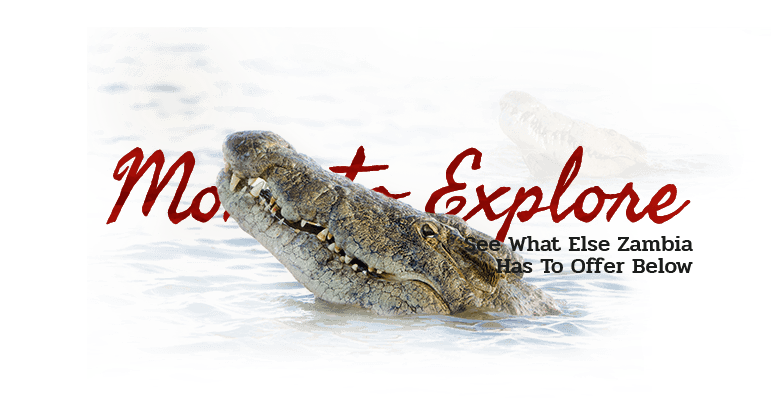
- Baines’ River Camp
- Bilimungwe Bushcamp
- Busanga Bush Camp
- Chamilandu Bushcamp
- Chiawa Camp
- Chichele Presidential Lodge
- Chindeni Bushcamp
- Chinzombo
- Chongwe Camp
- Kaingo Camp
- Kakuli Camp
- Kapamba Bushcamp
- King Lewanika
- Kuyenda Bushcamp
- Lion Camp
- Lolebezi Safari Lodge
- Luangwa River Camp
- Luwi Camp
- Mchenja Camp
- Mfuwe Lodge
- Mwamba Camp
- Nkwali
- Nsefu Camp
- Nsolo Camp
- Old Mondoro
- Puku Ridge Camp
- Royal Zambezi Lodge
- Sausage Tree Camp
- Shumba Camp
- Sindabezi Island
- Sungani Lodge
- Sussi & Chuma
- Tena Tena Lodge
- The River Club
- Thorntree River Lodge
- Tintswalo at Siankaba
- Toka Leya Camp
- Tongabezi
- Zungulila Bushcamp
Coming soon!
- Baines’ River Camp
- Bilimungwe Bushcamp
- Busanga Bush Camp
- Chamilandu Bushcamp
- Chiawa Camp
- Chichele Presidential Lodge
- Chindeni Bushcamp
- Chinzombo
- Chongwe Camp
- Kaingo Camp
- Kakuli Camp
- Kapamba Bushcamp
- King Lewanika
- Kuyenda Bushcamp
- Lion Camp
- Lolebezi Safari Lodge
- Luangwa River Camp
- Luwi Camp
- Mchenja Camp
- Mfuwe Lodge
- Mwamba Camp
- Nkwali
- Nsefu Camp
- Nsolo Camp
- Old Mondoro
- Puku Ridge Camp
- Royal Zambezi Lodge
- Sausage Tree Camp
- Shumba Camp
- Sindabezi Island
- Sungani Lodge
- Sussi & Chuma
- Tena Tena Lodge
- The River Club
- Thorntree River Lodge
- Tintswalo at Siankaba
- Toka Leya Camp
- Tongabezi
- Zungulila Bushcamp
Coming soon!

A world-famous wildlife sanctuary, the South Luangwa National Park encompasses 5,629-square miles and its valley is home to impressive concentrations of wildlife. The heart of the park is the Luangwa River which is the most intact major river system in Africa.The historic fertility of the region is perhaps primarily attributable to its topography. The Muchinga Escarpment forms the park’s western and northwestern boundaries, sloping steeply down to the river from the west side. The river valley, continued to the west by the Lunsemfwa River valley, forms a natural barrier, and to this day there are no man-made roads spanning the valley. Woodland savanna is the dominant ecosystem of the park, with Zambezian and mopane woodlands covering the valley and southern miombo woodlands on the higher slopes. Large patches of grassland traverse the woodlands and serve as floodplains at the valley floor.
Largely protected from human agricultural or commercial development, the park remains a haven to wildlife including 60 different animal species. Visitors can expect to encounter many of the park’s over 400 species of fowl including marabou stork, great white egrets, black headed herons, open billed storks, hornbills, pelicans, cranes, and the stately goliath heron. But more popular are the great herds of giraffe, zebra, duiker, eland, impala, puku, kudu, roan, sable, and hartebeest that roam the valley.
The most coveted species to spot are the big cat predators including lion and leopard who enjoy large populations as well as the rarer wild dog. The Luangwa River is home to large pods of hippo as well as extraordinary numbers of crocodile and many elephants can be spotted on the riverbanks. Sadly, the rhino population has been poached to extinction.
The park claims to be the birthplace of the walking safari and still lends itself to this safari style today. Most of the safari camps and lodges in the area have expert guides who lead bush walks with the aid of armed scouts from the Zambian Wildlife Authority. Game drives in special 4×4 vehicles with a knowledgeable tracker are usually offered in the morning and afternoon. South Luangwa is one of the few national parks to allow night safaris. Night drives use spotlights to discover the nocturnal activities of animals such as genet, owls, and the elusive leopard. During the wet season, some operators have canoeing safaris. The Park is ideal for budget travelers who can take public transport from Chipata.

- Baines’ River Camp
- Bilimungwe Bushcamp
- Busanga Bush Camp
- Chamilandu Bushcamp
- Chiawa Camp
- Chichele Presidential Lodge
- Chindeni Bushcamp
- Chinzombo
- Chongwe Camp
- Kaingo Camp
- Kakuli Camp
- Kapamba Bushcamp
- King Lewanika
- Kuyenda Bushcamp
- Lion Camp
- Lolebezi Safari Lodge
- Luangwa River Camp
- Luwi Camp
- Mchenja Camp
- Mfuwe Lodge
- Mwamba Camp
- Nkwali
- Nsefu Camp
- Nsolo Camp
- Old Mondoro
- Puku Ridge Camp
- Royal Zambezi Lodge
- Sausage Tree Camp
- Shumba Camp
- Sindabezi Island
- Sungani Lodge
- Sussi & Chuma
- Tena Tena Lodge
- The River Club
- Thorntree River Lodge
- Tintswalo at Siankaba
- Toka Leya Camp
- Tongabezi
- Zungulila Bushcamp
Coming soon!
- Baines’ River Camp
- Bilimungwe Bushcamp
- Busanga Bush Camp
- Chamilandu Bushcamp
- Chiawa Camp
- Chichele Presidential Lodge
- Chindeni Bushcamp
- Chinzombo
- Chongwe Camp
- Kaingo Camp
- Kakuli Camp
- Kapamba Bushcamp
- King Lewanika
- Kuyenda Bushcamp
- Lion Camp
- Lolebezi Safari Lodge
- Luangwa River Camp
- Luwi Camp
- Mchenja Camp
- Mfuwe Lodge
- Mwamba Camp
- Nkwali
- Nsefu Camp
- Nsolo Camp
- Old Mondoro
- Puku Ridge Camp
- Royal Zambezi Lodge
- Sausage Tree Camp
- Shumba Camp
- Sindabezi Island
- Sungani Lodge
- Sussi & Chuma
- Tena Tena Lodge
- The River Club
- Thorntree River Lodge
- Tintswalo at Siankaba
- Toka Leya Camp
- Tongabezi
- Zungulila Bushcamp
Coming soon!






 Safari Camps
Safari Camps Points of Interest
Points of Interest Hotels & Resorts
Hotels & Resorts  Journeys
Journeys
